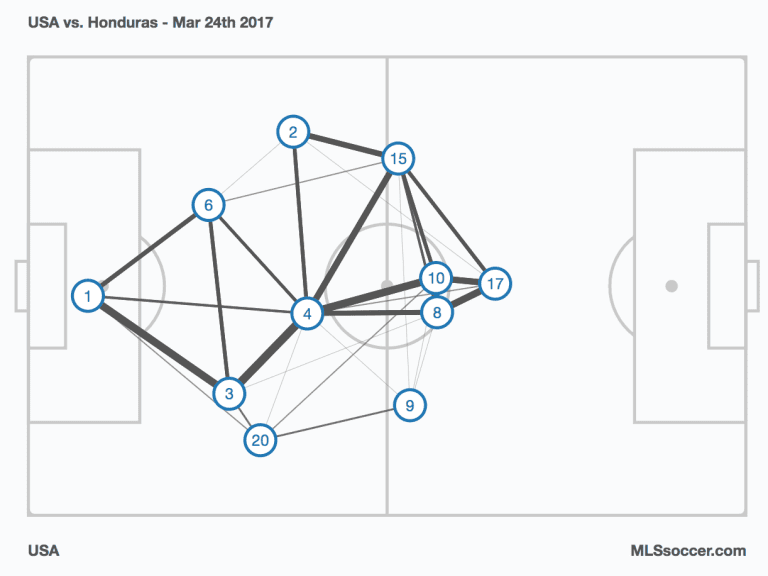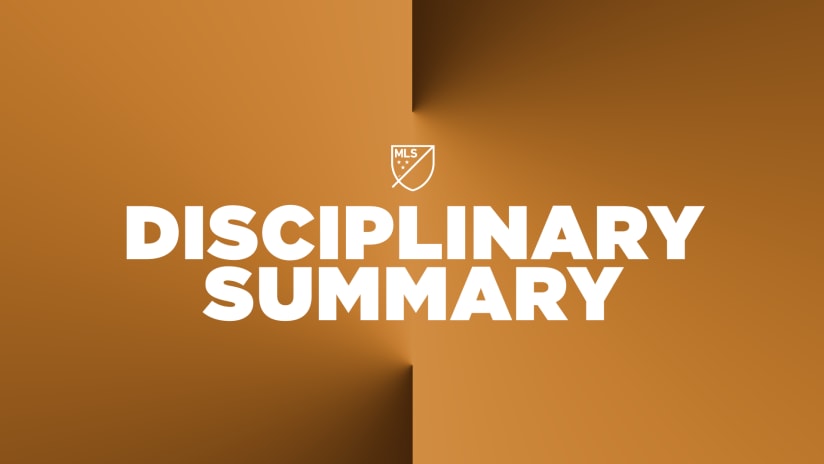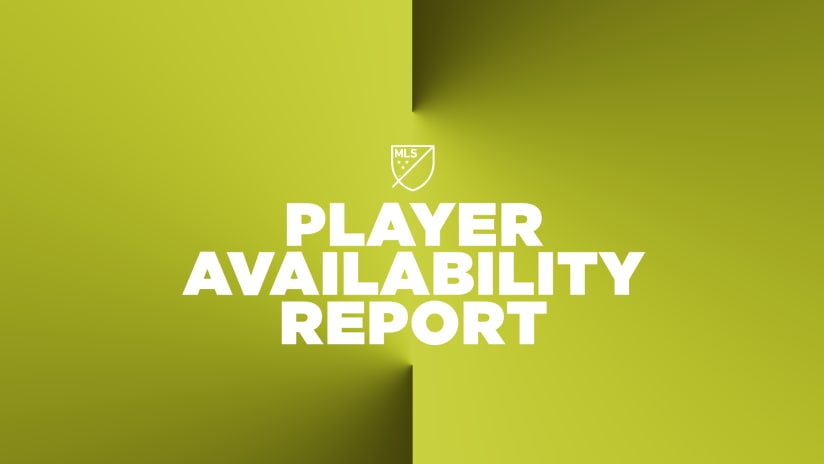There's a saying a friend of mine likes to drop even now and then, especially when watching young players.
"Watch how good player is on the ball – that's how good he is on the day. Watch how good a player is off the ball. That's how good he is."
In recent or non-recent USMNT history there have been few better examples of this than Christian Pulisic's first 20 minutes of Friday's record-setting, sphincter-unclenching 6-0 World Cup qualifying win over Honduras at Avaya Stadium in San Jose. Because the first real signpost for this match came from Pulisic's off-the-ball work, and it produced what was the game-winning goal:
First World Cup qualifier, first #USMNT goal for the Bay Area kid, @SLletget! #USAvHONhttps://t.co/XtTmoK6sDf
— FOX Soccer (@FOXSoccer) March 25, 2017
That's a brilliant pass from Jozy Altidore, whose passing was the foundation upon which this palace of goals was built. But the run from Pulisic – the ability, the hesitation-less drive to gash through multiple lines of defense – was what set the tone. He was going to push forward, and thus the US were going to push forward, and thus even if Honduras were going to sit deep, the US were going to still be launching fusillades into that box.
Pulisic's work on that play and later in the game (we'll get to that in a minute) overshadowed what was actually a sloppy first 20 minutes on the ball from the 18-year-old, which created for some nervy moments from the US when the score was just 1-0. This was especially troublesome because the US played in a diamond midfield, a 4-4-2 with Michael Bradley as a lone d-mid and both shuttlers wider than you usually see from that formation. Every turnover was a chance for Honduras to run, at pace, in the other direction, and there were a bunch:
These weren't "oh he's trying brilliant stuff and it's not coming off" moments, but rather "he's misplaying a ball to a guy standing five yards away."
It says a lot about Bradley and the US backline that only one of those turnovers led to immediate danger in the other direction – they were very, very good at shepherding play down blind alleys. It says a lot about Bruce Arena that he was willing to trust Pulisic in such a big game in a spot where every touch, positive or negative, can have outsized consequences. And it does, of course, say a lot about Pulisic that after the first 20 minutes he absolutely did clean it up.
He'd missed on five of the 10 passes he'd attempted by the 19-minute mark. He didn't misplay another ball until the 51st minute. In between he had a goal and two assists.
He'd already been good, and then suddenly he became good on the day. He's pretty clearly capable of reaching levels that no USMNT player has ever touched before.
He showed tonight he can also improve and settle himself down and fix stuff that just isn't working during the course of a game. It's rare and important skillset – mental, not physical – for someone who's going to be running the show for the US until about 2030 or so.
A few other notes:
• The diamond really did leave a ton of space in central midfield for Bradley to patrol, often by himself. I was skeptical about this, as were others whose opinions I respect:
Bradley answered with a virtuoso defensive performance shielding the backline. He had 13 recoveries, didn't miss a tackle, and generally kept the air clear in front of John Brooks and Omar Gonzalez in central defense. He also did a very, very good job of keeping his discipline in possession – always providing an outlet but never breaking shape while going searching for the ball (a habit of his when frustrated).
He was the ballwinner and the metronome and the guy whose goal put the nail into the coffin.
• Clint Dempsey was always going to start this game. Even if Bobby Wood and Jordan Morris were 100 percent fit and available, Dempsey was going to be in the lineup because he's still Clint Dempsey.
He's now the oldest player to score a hat-trick in the history of the Hexagonal, and he's just two goals away from Landon Donovan's all-time US record, and playing off of Altidore and Pulisic should get him how many more in the weeks, months and possibly couple of years to come?
Dempsey wasn't perfect on the night – like Pulisic he had his moments of slop – but he's still Clint Dempsey in front of goal.
• As I hinted at near the top, it was Altidore's work as the No. 9 that gave the US its attacking shape. He's always preferred dropping into the hole to be a playmaker (which is what he did to create three goals), but for most of the evening he was leading the line, pushing the Honduras defense deeper and deeper. That opened up space underneath for Dempsey and Pulisic:

This is a network passing graph made using Opta data. Each circle corresponds to the position of each player's aggregate touch, and the thickness of the lines represent the volume of passes exchanged back and forth.
It doesn't look like a 4-4-2 diamond (part of that is because of Sebastian Lletget's unfortunate early exit), but it really was. And it was functional because Altidore pinned los Catrachos back, giving plenty of acreage to the other attackers.
This completely undid Honduras's gameplan, which was to play in a 5-4-1 and use the two wide center backs to ballhawk in the channels. Altidore almost single-handedly blew up that formation and forced choice after choice on the opposing defense, many of which (most?) they got wrong.
Jose Luis Pinto – the Honduras coach – knows what he's doing, by the way. He's the guy who guided Costa Rica to the World Cup quarterfinals in 2014 playing primarily with a 5-4-1, and has a pretty good share of the credit for making that formation a viable one on the world stage. This was not some slapdash, "let's see if it sticks" lineup and tactical choice.
• By playing the diamond, Arena dared Honduras to do damage from out wide. The Catrachos couldn't help themselves and took the bait to the tune of 30 (!!!) crosses. THIRTY. That's a ton.
The US crossed the ball just three times all game. I'm going to beat Paul Carr senseless until he does the research and can tell me definitively if that's the all-time low. I'm also going to wager a substantial sum that it is.
• There's almost nothing to say about Honduras's individuals, or their approach going forward. I'll just say that I remain surprised at the prominent role Jorge Claros still has, and wonder why a better ball-winner like Bryan Acosta can't crack the regular rotation.
The US exploited that ruthlessly.
• The left side for the US were Darlington Nagbe at left midfield and Jorge Villafaña at left back, and they were mistake-free in their passing and defensive positioning. I kept waiting for that special moment when Nagbe would just eviscerate multiple defenders off the dribble, but 1) it didn't really come, and 2) it wasn't really necessary.
The best part about both players was how reliable they were when they received and recycled the ball. There was a measured calm to both of them.
• Geoff Cameron and Graham Zusi weren't quite as good at right back, but considering where they are on the depth chart at that spot it's a job well done from them. Still, expect Panama to attack predominantly down that side on Tuesday, especially because doing so will drag Gonzalez out of the center of the backline at least a few steps.
• And finally... Arena took a risk in this game by putting a team out in the diamond, which is a relatively complex formation to play. He took a risk by putting so many guys I'd consider to be attackers (five, really) in the starting lineup, and just a single d-mid, and a left back who'd never played in a match like this before.
It was less conservative than I'd expected, and it obviously paid better than anyone could've expected. In part that's just raw talent – even without Wood and Morris, Fabian Johnson and DeAndre Yedlin, this is still the deepest US player pool ever. But we've seen this collection of talent fail spectacularly in the not-so-distant past, so let's call it what it is:
The US seemed clear about their roles, clear about the formation, clear about their partnerships, clear about their responsibilities, and clear about where the goal was. They seemed prepared and engaged in a way they haven't been for a while.
It was good, and necessary. And Tuesday is a chance to turn one useful data point into two, and take a big step closer to Russia 2018 in the process.













